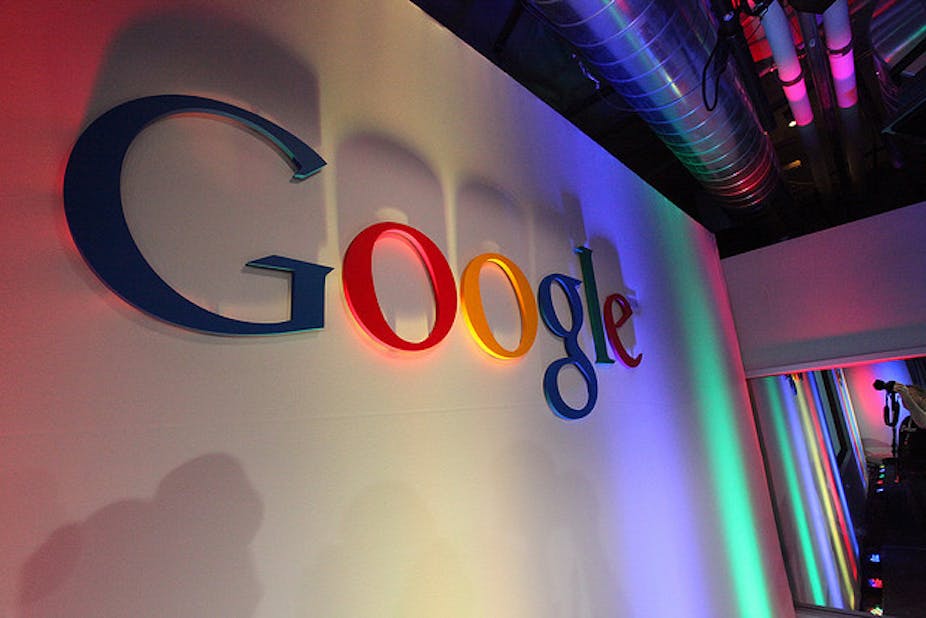Following on from Apple’s developer conference held earlier this month, Google has now had its chance to respond to Apple’s agenda with its own vision for the coming tech landscape. The keynote speech for Google I/O slipped into what is now a familiar pattern and one that on the surface at least, has become largely indistinguishable from Apple’s.
Underneath the style however is the breadth of Google’s involvement in technology and the comprehensiveness of platforms that will drive everything from cloud infrastructure through to every consumer device important to our everyday lives. While Apple certainly has many elements of Google’s offerings, Google this year consolidated and pulled even further away.
The differences between the tech giants is sometimes hard to see because of the marked similarity in the way they approach presentations such as keynotes, package their products as platforms and show how they will transform our lives.
Keynotes always start with the statistics of how well Android is doing and how Apple is struggling to keep up with features and innovations. Each company emphasises its strengths and their competitor’s weaknesses. For Google, Apple is portrayed as struggling to keep up with features in iOS that match Android. Apple on the other hand makes a point of calling out the slowness of adoption of new versions of Android by the mobile phone companies and its vulnerability to malware. Both companies have valid points.
This year however, Google delivered on two products that Apple has still failed to launch. Watches running Android Wear were launched by Samsung and LG and Google announced the Google TV. Apple is not planning to launch a TV despite rumours in the near future and its watch may or may not be available later this year.
In other areas, there was almost a one-for-one matching of Apple’s announcements of features both on their mobile phones but also on Google’s Chromebooks which have defied expectations by increasing their popularity with consumers and businesses.
If the developer conferences were a match in the world cup, you would have to say that Google would be the one going onto the next round.
These are the key features of Google’s announcements:
Android One
Android One is a reference platform for mobile phone hardware that will enable companies to manufacture inexpensive mobile phones supporting native Android. These phones will also benefit from automatic updates from Google. Essentially this is an expansion of the Google Nexus range of devices that Google partnered with specific manufacturers to develop. It will help Google get to a wider audience with cheaper phones.
Android L
The next version (5.0) of Android that introduces a new user interface design called “Material Design”. Material Design is a refinement of the design of Google Now along with some 3D features and will be applied to more of Google’s apps. Like Microsoft and Apple, sadly, Google has now followed a design idea and removed borders from borders and other tables. Other features include updates to Notifications which, like Apple, will enable users to interact with applications directly from the notification without going into the app itself. A rather cool feature - but perhaps risky from a security perspective - allows links in the web browser to launch directly into an app itself, rather than to another web page.
Android Wear
As previously announced, watches from LG and Samsung running Google’s wearable were released to coincide with the conference. Attendees of the conference will be given one of these phones in addition to the Motorola 360 when that becomes available.
The key feature of Google’s approach to wearables is the prominence of voice in controlling the device. To a certain extent, there is little choice when dealing with devices that have limited capacity for buttons or keyboards. It remains to be seen however whether people will adapt to this because of the social awkwardness of talking to your device, especially in public.
The other element of the of the design of Android Wear is the tight interaction of a watch with phone and even with other devices such as Chromebooks and laptops. A watch can control other devices and even signal when the user is nearby and automatically log them in.
Android Auto
Android Auto brings Android integration of phones into the dashboard of cars, controlled by voice commands and touch. Essentially, this is taking the output from a phone or tablet and allowing display and interaction on the screen of the system in the car.
Android TV
Android for TVs which implement an android approach to the user interface of TVs and integrate with phones and watches.
Chrome OS
Google announced the continued growth and commitment of Chromebooks. The most significant development to come to Chrome OS is the ability to run Android applications on Chrome. This would significantly expand the usefulness of Chromebooks which to date have been limited by the necessity of being connected to the internet and using the browser.
Google Docs
The ability to handle review features in a similar way to Microsoft Word was possibly the most critical missing piece from Google Docs and it has now been added. The other new feature is the ability to work directly on Microsoft Word and Excel documents without first converting them to a Google doc - which will no doubt be popular with business users.
Google Drive gets unlimited storage for $10 per month further raising the bar for cloud storage providers.
Google Fit
Like Apple’s Health Kit, Google is providing a way of consolidating personal fitness data and provide integration across apps. Interestingly, Nike are working with Google alongside Adidas which means that their relationship with Apple is not exclusive.

